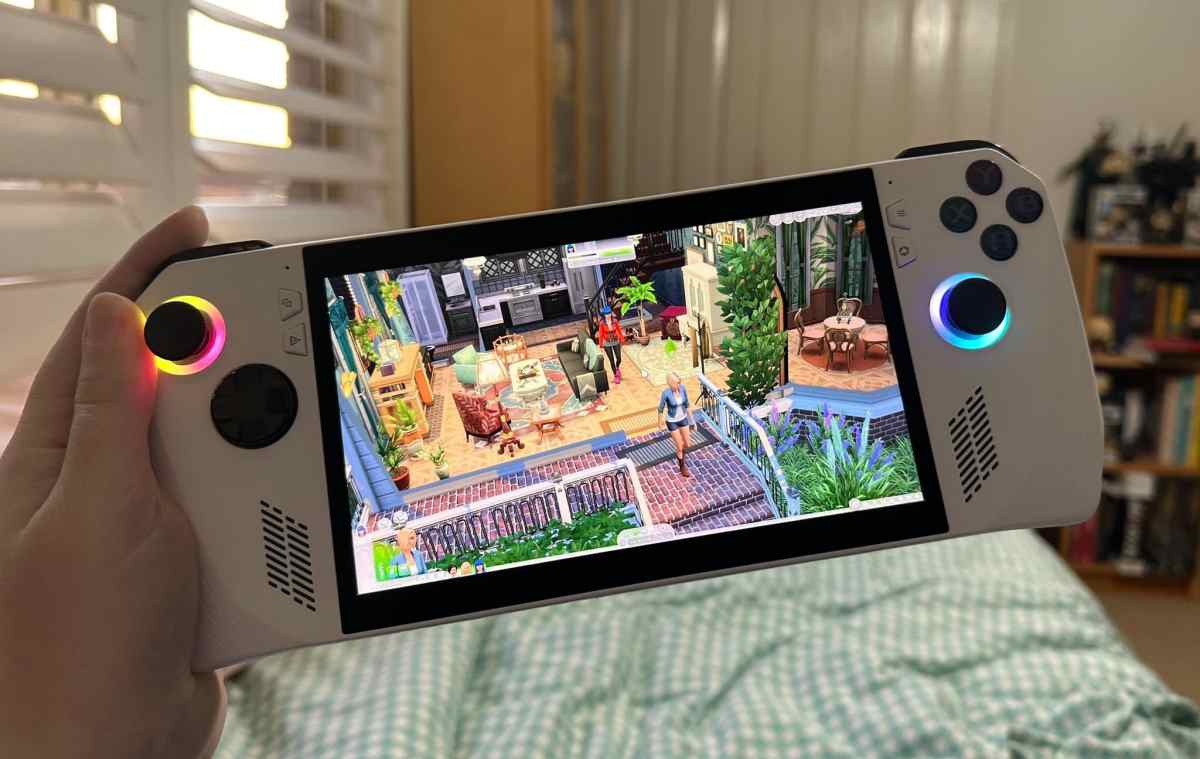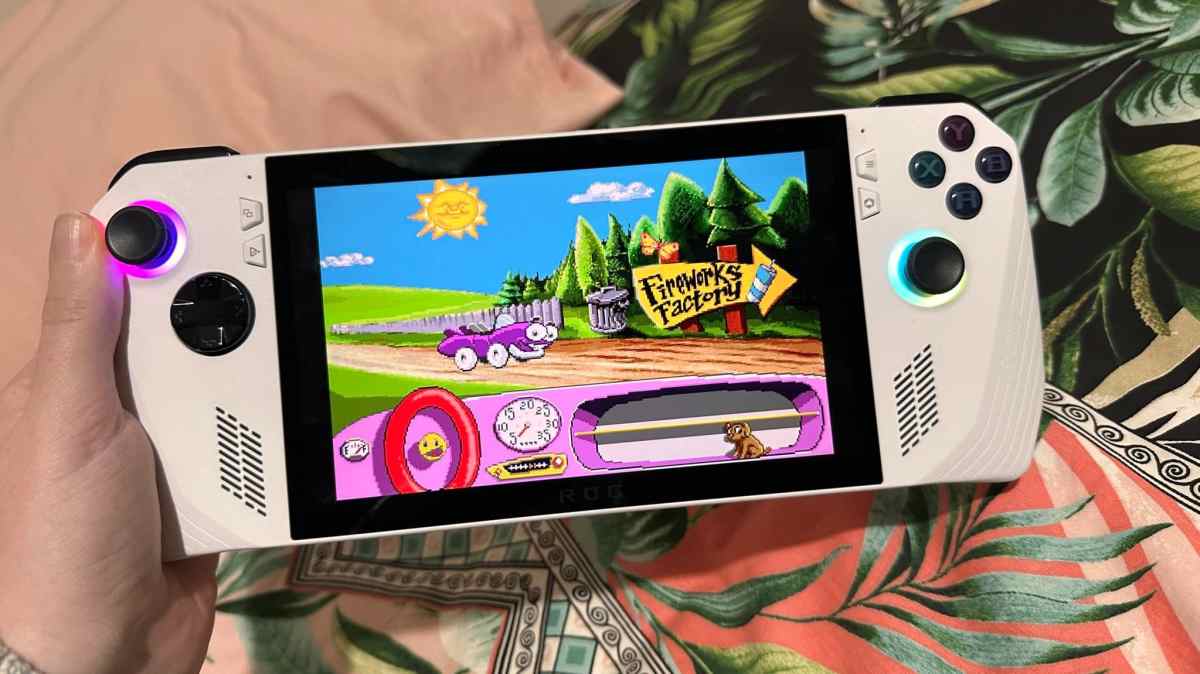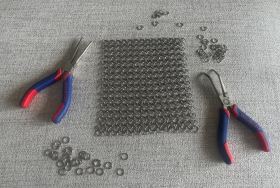I had my doubts when the first wave of handheld gaming PCs hit the mainstream market, following in the footsteps of the popular Steam Deck. Early reports for devices including the Asus ROG Ally were mixed, with many critics flagging Windows compatibility issues, games not working as intended, and a range of other bugbears that prevented these handhelds from realising their true potential.
But after nearly a year with the Asus ROG Ally, I’ve become convinced. Minor issues aside, using an Asus ROG Ally, instead of a dedicated gaming PC, has genuinely changed my life.
Before I dive into all the reasons why, I do need to point out the device I’m babysitting still belongs to Asus. In the wake of its review cycle, I was asked whether I’d like to mind the device on a long-term loaner basis, with the proviso that it could be taken back at any time. I did sign an agreement to that effect, but I know now that I would kick and bite if my time with the device were to end. (Or, more reasonably, I would simply purchase my own device.)
Read: Asus ROG Ally Review – Flawed but fantastic
In the months since I’ve looked after this device, it’s inspired me to do something I’ve always wanted to do, but something that felt unachievable: I’ve gone into my Steam backlog, and played games I’ve hoarded for years. I’ve played new games, and old games, and favourites I’ve been meaning to replay forever.

A surprise boost in productivity
With the Asus ROG Ally, I’ve found an easy, convenient, portable companion that opens up doors for my gaming habits. Playing games on a laptop or desktop is so often a solitary activity – you’re holed up in a room, away from other folks, largely minding your own business. I’ve found with the ROG Ally, I can bring my games with me, and make them a more social activity. A gaming laptop is also portable, to be fair, but it doesn’t have the easy manoeuvrability or comfort that a handheld gaming device has.
There have been some caveats in the move to the living room couch, like having to bring the ROG Ally charger downstairs, to account for battery life within the 1.5-2.5 hour mark, but the convenience covers that gap fairly well. A few weeks ago, I was on deadline to review Paper Trail, and had family obligations at the same time. I brought the ROG Ally with me, and I was just as much a part of conversations as everyone else was – all while folding paper, and solving brain-scratching puzzles.
It’s unique to my job that the ROG Ally would increase productivity, while also providing a portable PC gaming solution, but it’s worth noting that it’s now helped out on multiple occasions – when reviewing Prince of Persia: The Lost Crown, Duck Detective: The Secret Salami, Broken Roads, Harold Halibut, and Dicefolk.
It’s even allowed me to play higher spec games that don’t actually run on my current gaming laptop – a 2020 model that’s just doing its best. Resident Evil 2 went gangbusters on the Asus ROG Ally, much to my surprise. I came in with zero expectations, and was met with smooth, crisp gameplay, zero lag, and easy to navigate controls. Immediately after, I bought Resident Evil 3 and Resident Evil 6 (yes, I know it’s meant to be the “bad one”) safe in the knowledge that the ROG Ally could handle it.
Chomping through my Steam backlog

It wasn’t only newer games that got their fair share of the love – it was my entire Steam backlog that got a spotlight with the arrival of the ROG Ally. As your average gamer will know, it’s very easy to accumulate a massive backlog of games on Steam and other storefronts, particularly if you love a bargain.
Over the last few years, I’ve purchased countless games in Steam sales, with the faint hope of one day having time to play them – and those same games have largely remained unplayed in my Steam library ever since. But having an easy, portable PC gaming system by my bedside has made all the difference to my habits.
There’s a blurry line between laziness and efficiency, but having one less hurdle to climb to check out games that have always been on my list has been excellent. On a whim, I finally played The Case of the Golden Idol a few months back – and what a fantastic game that is. I wish someone had shaken me vigorously by the shoulders, and told me to play it much earlier. I also became a bit obsessed with Talisman: Digital Edition, and its many loops of magic and mystery.
An added side effect of having the ROG Ally so close is that with every Steam demo festival, I’ve finally had an easy, simple way to check out new experiences. During the latest Steam Next Fest, I got a taste of Wander Stars, Nirvana Noir, Tom the postgirl, The Mermaid Mask, and The Horror at Highrook, all of which are now firmly on my wishlist.
It really is the smallest difference that the ROG Ally introduces – the minor convenience of a gaming PC being small, and easy to carry – but it’s inspired such a change. It’s inspired hope that one day, maybe, I’ll actually conquer my gaming backlog. That my years of purchasing the “hot new game” will finally lead to years of actually playing those games (which are perhaps slightly less hot now).
As I mentioned, the ROG Ally is not a perfect device. The battery life is still pretty abysmal, some games just don’t run properly on it, cloud streaming is a bit hit-or-miss, the screen is unspectacular, and the buttons can be weirdly gummy. But on the whole, it’s improved my life significantly, to the point where it’s become an integral part of every day.
We’re only in the early stages of handheld PC gaming tech, and it’s likely to evolve from here. Already, Asus has announced a ROG Ally refresh, with an improved battery and other tweaks. But as far as I’m concerned, we’re already at a point where these devices have the power to make genuine change. These may all be personal anecdotes, but I’ve been having a blast with the ROG Ally lately, and to put it simply, it’s a device that just absolutely rules.
An Asus ROG Ally was provided on a long-term basis to GamesHub for the purposes of a review, and potential future coverage. There was no obligations for content tied to this agreement.





